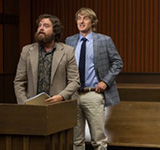Now that he’s back in media again, Pearlstine has come to see flaws in the way journalists work. �I think all the journalistic instincts are to have heroes and villains. It’s either �this person is good, this person is bad,’ �this person is smart, that person is stupid.’ More often than not, there’s a lot of gray. There are a lot of decisions. And I think people who are successful don’t give enough credit to luck. Right place, right time.�
Pearlstine’s decision to leave Time Inc. in 2005: good luck. Revenues had peaked the previous year and were nosing downward. It was left to Huey to confront the darkening financial picture. Complicating matters, Huey’s relationship with Ann Moore, Don Logan’s successor as CEO, was rocky. She’d earned the nickname �Launch Queen� by writing the business plans for InStyle and Real Simple. Huey could be dismissive of the company’s softer, more profitable titles, and was known to say privately that �Fortune was one of the few Time Inc. magazines you couldn’t read when you’re drunk.�
Far more problematic than the sniping on the 34th floor was the lack of a coherent strategy to adapt to the web. Moore’s solution was to hit her profit goals through cost cutting. �Ann was managing to the number,� a former senior executive says. Morale sank as she enacted rounds of layoffs and purged top executives. At times, her management style could be almost comically tone-deaf. She once held a meeting with Time staff in the Leonard Bernstein suite at the Hôtel de Crillon, where she was staying during a Fortune conference in Paris. �We have to get serious about cost cutting,� she declared.
Time Inc. wasn’t alone among media companies flummoxed by the rise of online journalism and the simultaneous deterioration of print-advertising dollars�disorientation, and some level of panic, has been the constant emotional state at every legacy-journalism outlet. But being a division of a sprawling media conglomerate prevented Time Inc. from making significant digital investments, especially since, ironically, it still delivered profits. After the AOL merger, when the business was healthier, Moore tried spinning off Time Inc. She recruited Goldman Sachs to manage the IPO, but Time Warner’s then-CEO Richard Parsons rejected the proposal. �We were like some stupid little colony,� says a former executive. �It was like extraction mining, and absolutely nothing was returned.�
In 2009, Terry McDonell, then the editor of Time Inc.’s sports group, attempted a digital intervention. Apple was rumored to be readying a �genius device� that would save the magazine business, and McDonell partnered with design firm the Wonderfactory to develop a prototype of Sports Illustrated’s tablet magazine. The exercise generated media buzz when McDonell debuted a three-minute video demonstration online. But according to sources, Steve Jobs was upset that the company had released the prototype before he had had a chance to reveal the iPad�and a tablet edition of Time�to the world. �I think it’s stupid. Really stupid,� Jobs told Time Inc. executives during a meeting in New York in 2010 when asked about the prototype. The meeting went downhill from there. Jobs, suffering side effects of hormone treatment following his liver transplant, started tearing up as he complained that Fortune had kicked him when he was down by running a story on his stock-option-backdating scandal. At that moment, Moore walked in and the iPad she began playing with started blaring music. �What do I do? What do I do?� she said, handing it off to McDonell.
By this time, Bewkes was growing increasingly frustrated with Time Inc.’s performance and decided to bring in a new CEO. In August 2010, he tapped Jack Griffin, president of Meredith, a publisher of mid-market titles like Better Homes and Gardens and Diabetic Living. But Griffin’s arrival only deepened the dysfunction on the 34th floor. He struck some senior executives as a poor cultural fit. (In a meeting full of female executives, he joked, �Having come from a company that published women’s titles, finally I have magazines I can read.�) And the outside executives Griffin hired to advise him on strategy became a polarizing presence. Peter �Kreisky, who had formerly worked at McKinsey, was a particular flash point. One person close to Huey and Nelson says he was an �overpaid blowhard.� Kreisky fires back: �We found feelings of entitlement within the company that really blinded executives, possibly willfully, to the seriousness of new competition,� he tells me.
In early January 2011, Griffin’s conflicts with Huey came to a head. According to sources, Griffin became furious during a meeting when Nelson, then editorial director, openly questioned his plan to invest in Time after pushing for cuts at other titles.
 Subscribe
Subscribe


 The Approval Matrix
The Approval Matrix David Edelstein on Are You Here
David Edelstein on Are You Here The Vulture Recommends Generator
The Vulture Recommends Generator 

